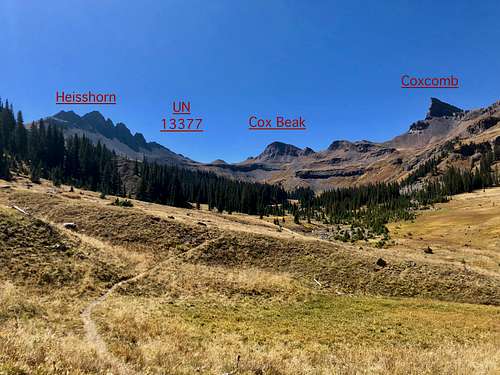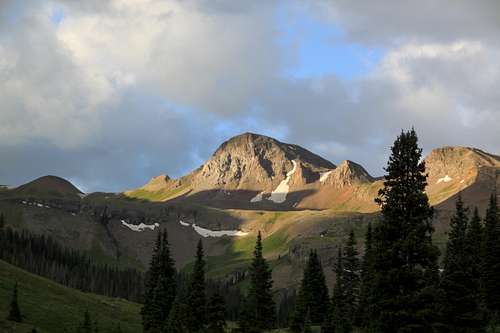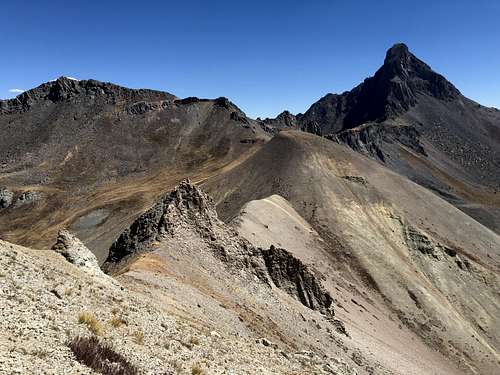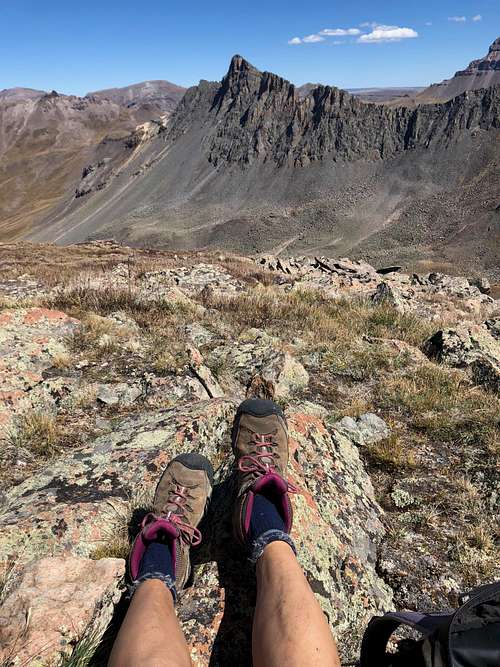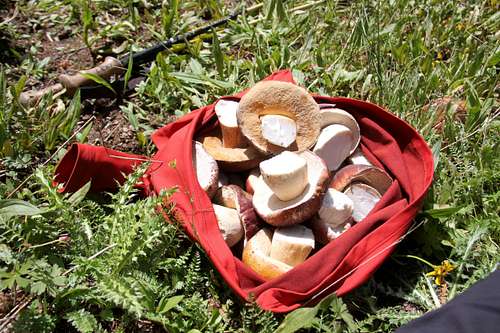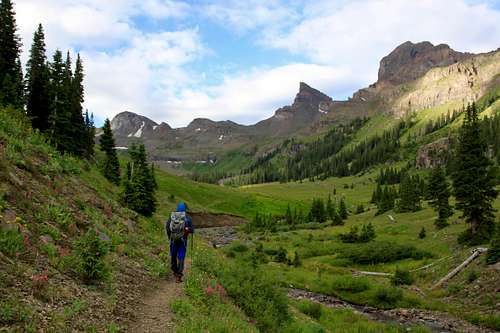-
 4051 Hits
4051 Hits
-
 81.18% Score
81.18% Score
-
 13 Votes
13 Votes
|
|
Mountain/Rock |
|---|---|
|
|
38.07411°N / 107.52494°W |
|
|
Hinsdale |
|
|
Hiking, Mountaineering, Scrambling |
|
|
Spring, Summer, Fall, Winter |
|
|
13206 ft / 4025 m |
|
|
Overview
Unnamed 13206, also unofficially called "Cox Beak" is another low 13er located within Cimarron range of San Juan Mountains. The peak is not climbed often, but the views are spectacular in all directions. Coxcomb looks so dramatic from here. Most of the climb can be done on a trail with only the final ascent on a grass and some talus and scree (not bad). "Cox Beak" can be combined with another 13ers in the area. I chose a combination with Unnamed 13377 since I have done all other close by peaks. Some people did much longer combinations including Heisshorn (the ridge between Unnamed 13377 and Heisshorn is very tough and not recommended, most people drop down and bypass this ridge on the south side), El Punto, Unnamed 13340A and Unnamed 13222B.- Unnamed 13377 0.58 miles
- Coxcomb Peak 0.63 miles
- "Heisshorn" 0.76 miles
- Redcliff 1.01 miles
- Unnamed 13300 C 1.19 miles
- Wetterhorn Peak 1.21 miles
- "Fortress Peak" 1.66 miles
- Matterhorn Peak 1.69 miles
- "El Punto" 1.75 miles
- Unnamed 13340 A 2.31 miles
- Unnamed 13201 2.43 miles
- Unnamed 13222 B 2.89 miles
- Uncompahgre Peak 3.42 miles
Getting There
Approach via Middle Fork of Cimarron: From Montrose follow US Highway 50 for approximately 20 miles to the intersection with County Road 858 (sign for Silver Jack Reservoir). Turn south on CR 858 and continue approximately 18.7 miles to Silver Jack Reservoir. Country ROad 858 becomes Forest Service Road # 858 at the forest boundary. Continue on FSR for approximately 1 mile to Forest Service Road # 861.1. It is signed for Middle Fork of the Cimarron. Turn right and follow this road for approximately 4.6 miles to the trailhead.Route
Red Tape
1. Entering or being in the restricted area with more than 15 people per group, with a maximum combination of people and stock not to exceed 25 per group.2. Camping within one hundred (100) feet of any lake, stream, or National Forest System Trail. 3. Building, maintaining or using a fire, campfire, or wood-burning stove fire:a) within one hundred (100) feet of any lake, stream or National Forest System Trail.b) above treeline. 4. Storing equipment, personal property, or supplies for longer than seven (7) days. 5.Hitching, tethering, hobbling or otherwise confining a horse or other saddle or pack animal: 1) in violation of posted instructions, or 2) within 100 feet of all lakes, streams, and National Forest System Trails. 6. Possessing a dog which is not under control, or which is disturbing or damaging wildlife, people, or property. Note: the term "under control" is defined as the dog being leashed, and/or under direct verbal control by the dogs owner or handler at all times. 7. Shortcutting a switchback in a trail.


